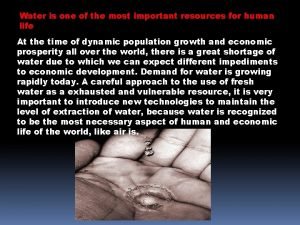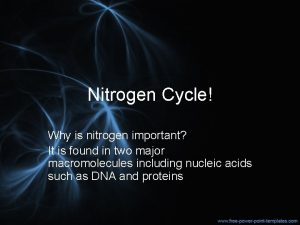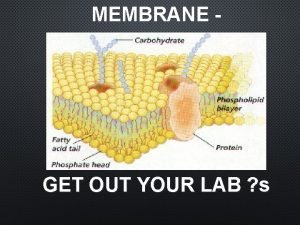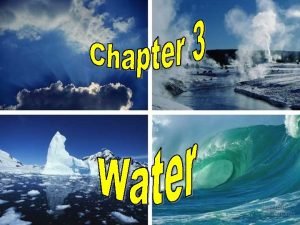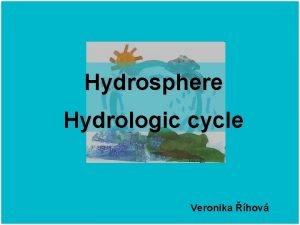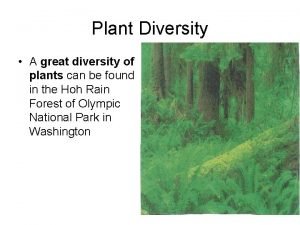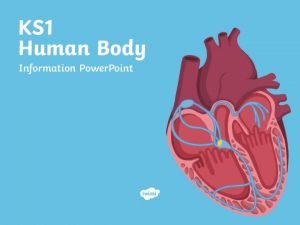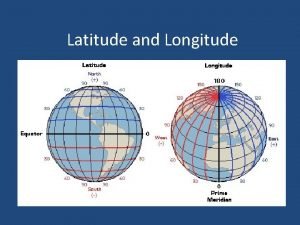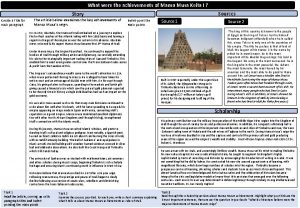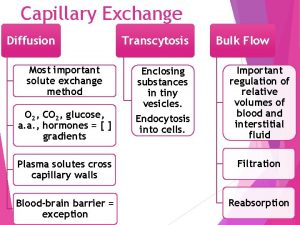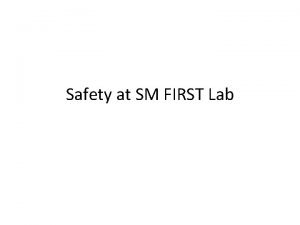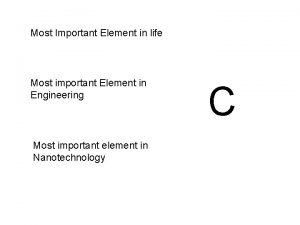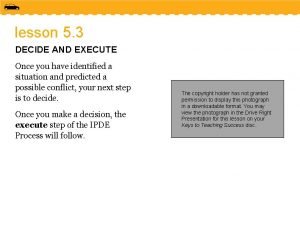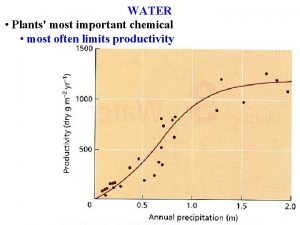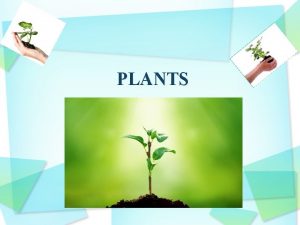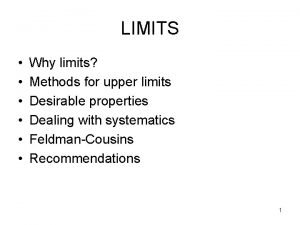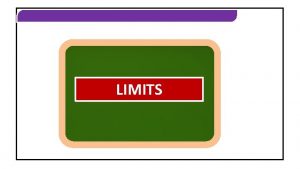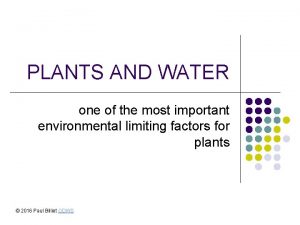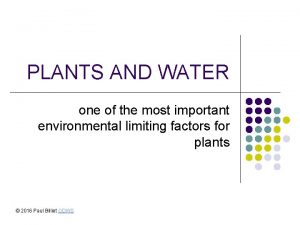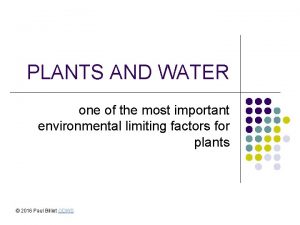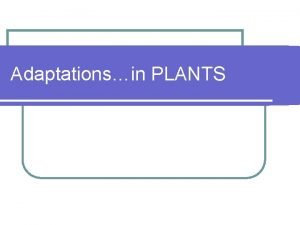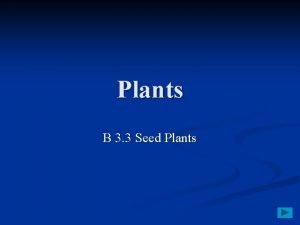WATER Plants most important chemical most often limits


























![p. H [H+] = acidity of a solution p. H = convenient way to p. H [H+] = acidity of a solution p. H = convenient way to](https://slidetodoc.com/presentation_image_h2/4c6d0638af43969b8098334040623c3f/image-27.jpg)

![Water movement Diffusion: movement of single molecules down ∆[ ] due to random motion Water movement Diffusion: movement of single molecules down ∆[ ] due to random motion](https://slidetodoc.com/presentation_image_h2/4c6d0638af43969b8098334040623c3f/image-29.jpg)
![Water movement Diffusion: movement of single molecules down ∆[ ] due to random motion Water movement Diffusion: movement of single molecules down ∆[ ] due to random motion](https://slidetodoc.com/presentation_image_h2/4c6d0638af43969b8098334040623c3f/image-30.jpg)
![Water movement Diffusion: movement of single molecules down ∆[ ] due to random motion Water movement Diffusion: movement of single molecules down ∆[ ] due to random motion](https://slidetodoc.com/presentation_image_h2/4c6d0638af43969b8098334040623c3f/image-31.jpg)
![Water movement Diffusion: movement of single molecules down ∆[ ] due to random motion Water movement Diffusion: movement of single molecules down ∆[ ] due to random motion](https://slidetodoc.com/presentation_image_h2/4c6d0638af43969b8098334040623c3f/image-32.jpg)
![Water movement Diffusion: movement of single molecules down ∆[] due to random motion until Water movement Diffusion: movement of single molecules down ∆[] due to random motion until](https://slidetodoc.com/presentation_image_h2/4c6d0638af43969b8098334040623c3f/image-33.jpg)
![Water movement Diffusion: movement of single molecules down [] due to random motion until Water movement Diffusion: movement of single molecules down [] due to random motion until](https://slidetodoc.com/presentation_image_h2/4c6d0638af43969b8098334040623c3f/image-34.jpg)

![Water movement Diffusion: movement of single molecules down ∆[] due to random motion until Water movement Diffusion: movement of single molecules down ∆[] due to random motion until](https://slidetodoc.com/presentation_image_h2/4c6d0638af43969b8098334040623c3f/image-36.jpg)








![Water potential Water moves to lower its potential Depends on: 1. [H 2 O]: Water potential Water moves to lower its potential Depends on: 1. [H 2 O]:](https://slidetodoc.com/presentation_image_h2/4c6d0638af43969b8098334040623c3f/image-45.jpg)
![Water potential Water moves to lower its potential Depends on: 1. [H 2 O]: Water potential Water moves to lower its potential Depends on: 1. [H 2 O]:](https://slidetodoc.com/presentation_image_h2/4c6d0638af43969b8098334040623c3f/image-46.jpg)
![Water potential Water moves to lower its potential Depends on: 1. [H 2 O]: Water potential Water moves to lower its potential Depends on: 1. [H 2 O]:](https://slidetodoc.com/presentation_image_h2/4c6d0638af43969b8098334040623c3f/image-47.jpg)
![Water potential Water moves to lower its potential Depends on: 1. [H 2 O]: Water potential Water moves to lower its potential Depends on: 1. [H 2 O]:](https://slidetodoc.com/presentation_image_h2/4c6d0638af43969b8098334040623c3f/image-48.jpg)













- Slides: 61

WATER • Plants' most important chemical • most often limits productivity

WATER • Plants' most important chemical • most often limits productivity • Often >90%% of a plant cell’s weight

WATER • Plants' most important chemical • most often limits productivity • Often >90%% of a plant cell’s weight • Gives cells shape

WATER • Plants' most important chemical • most often limits productivity • Often >90%% of a plant cell’s weight • Gives cells shape • Dissolves many chem

WATER • Dissolves many chem • most biochem occurs in water • Source of e- for PS

WATER • most biochem occurs in water • Source of e- for PS • Constantly lose water due to PS (1000 H 2 O/CO 2)

WATER • most biochem occurs in water • Source of e- for PS • Constantly lose water due to PS • Water transport is crucial!

WATER • Water transport is crucial! • SPAC= Soil Plant Air Continuum • moves from soil->plant->air

Plant Water Uptake Water is drawn through plants along the SPAC, using its special properties to draw it from the soil into the air

WATER Formula = H 2 O Formula weight = 18 daltons Structure = tetrahedron, bond angle 104. 5˚

WATER Structure = tetrahedron, bond angle 104. 5˚ polar : O is more attractive to electrons than H + on H - on O

Water Polarity is reason for water’s properties water forms H-bonds with polar molecules

Water Polarity is reason for water’s properties water forms H-bonds with polar molecules Hydrophilic = polar molecules Hydrophobic = non-polar molecules

Properties of water 1) Cohesion = water H-bonded to water -> reason for surface tension

Properties of water 1) Cohesion = water H-bonded to water -> reason for surface tension -> why water can be drawn from roots to leaves

Properties of water 1) Cohesion = water H-bonded to water 2) Adhesion = water H-bonded to something else

Properties of water 1) Cohesion = water H-bonded to water 2) Adhesion = water H-bonded to something else • Cohesion and adhesion are crucial for water movement in plants!

Properties of water 1) Cohesion = water H-bonded to water 2) Adhesion = water H-bonded to something else • Cohesion and adhesion are crucial for water movement in plants! • Surface tension & adhesion in mesophyll creates force that draws water through the plant!

Properties of water 1) Cohesion = water H-bonded to water 2) Adhesion = water H-bonded to something else 3) high specific heat • absorb heat when break H-bonds: cools leaves

Properties of water 1) Cohesion = water H-bonded to water 2) Adhesion = water H-bonded to something else 3) high specific heat • absorb heat when break H-bonds • Release heat when form H-bonds

Properties of water 1) Cohesion = water H-bonded to water 2) Adhesion = water H-bonded to something else 3) high specific heat 4) Ice floats

Properties of water 1) Cohesion = water H-bonded to water 2) Adhesion = water H-bonded to something else 3) high specific heat 4) Ice floats 5) Universal solvent

Properties of water 1) Cohesion = water H-bonded to water 2) Adhesion = water H-bonded to something else 3) high specific heat 4) Ice floats 5) Universal solvent • Take up & transport nutrients dissolved in water

Properties of water 5) “Universal” solvent • Take up & transport nutrients dissolved in water • Transport organics dissolved in water

Properties of water 1) Cohesion = water H-bonded to water 2) Adhesion = water H-bonded to something else 3) high specific heat 4) Ice floats 5) Universal solvent 6) Hydrophobic bonds

Properties of water 1) Cohesion = water H-bonded to water 2) Adhesion = water H-bonded to something else 3) high specific heat 4) Ice floats 5) Universal solvent 6) Hydrophobic bonds 7) Water ionizes
![p H H acidity of a solution p H convenient way to p. H [H+] = acidity of a solution p. H = convenient way to](https://slidetodoc.com/presentation_image_h2/4c6d0638af43969b8098334040623c3f/image-27.jpg)
p. H [H+] = acidity of a solution p. H = convenient way to measure acidity p. H = - log 10 [H+] p. H 7 is neutral: [H+] = [OH-] -> at p. H 7 [H+] = 10 -7 moles/l

p. H Plants vary p. H to control many processes!
![Water movement Diffusion movement of single molecules down due to random motion Water movement Diffusion: movement of single molecules down ∆[ ] due to random motion](https://slidetodoc.com/presentation_image_h2/4c6d0638af43969b8098334040623c3f/image-29.jpg)
Water movement Diffusion: movement of single molecules down ∆[ ] due to random motion until [ ] is even • Driving force?
![Water movement Diffusion movement of single molecules down due to random motion Water movement Diffusion: movement of single molecules down ∆[ ] due to random motion](https://slidetodoc.com/presentation_image_h2/4c6d0638af43969b8098334040623c3f/image-30.jpg)
Water movement Diffusion: movement of single molecules down ∆[ ] due to random motion until [ ] is even • Driving force: lowers free energy • ∆G = ∆H- T∆S
![Water movement Diffusion movement of single molecules down due to random motion Water movement Diffusion: movement of single molecules down ∆[ ] due to random motion](https://slidetodoc.com/presentation_image_h2/4c6d0638af43969b8098334040623c3f/image-31.jpg)
Water movement Diffusion: movement of single molecules down ∆[ ] due to random motion until [ ] is even Bulk Flow: movement of groups of molecules down a pressure gradient
![Water movement Diffusion movement of single molecules down due to random motion Water movement Diffusion: movement of single molecules down ∆[ ] due to random motion](https://slidetodoc.com/presentation_image_h2/4c6d0638af43969b8098334040623c3f/image-32.jpg)
Water movement Diffusion: movement of single molecules down ∆[ ] due to random motion until [ ] is even Bulk Flow: movement of groups of molecules down a pressure gradient • Independent of ∆ [ ] !
![Water movement Diffusion movement of single molecules down due to random motion until Water movement Diffusion: movement of single molecules down ∆[] due to random motion until](https://slidetodoc.com/presentation_image_h2/4c6d0638af43969b8098334040623c3f/image-33.jpg)
Water movement Diffusion: movement of single molecules down ∆[] due to random motion until [ ] is even Bulk Flow: movement of groups of molecules down a pressure gradient • Independent of ∆[ ] ! • How water moves through xylem
![Water movement Diffusion movement of single molecules down due to random motion until Water movement Diffusion: movement of single molecules down [] due to random motion until](https://slidetodoc.com/presentation_image_h2/4c6d0638af43969b8098334040623c3f/image-34.jpg)
Water movement Diffusion: movement of single molecules down [] due to random motion until [ ] is even Bulk Flow: movement of groups of molecules down a pressure gradient • Independent of ∆ [ ] ! • How water moves through xylem • How water moves through soil and apoplast

Water movement Bulk Flow: movement of groups of molecules down a pressure gradient • Independent of ∆ [ ] ! • How water moves through xylem • Main way water moves through soil and apoplast • Very sensitive to radius of vessel: increases as r 4
![Water movement Diffusion movement of single molecules down due to random motion until Water movement Diffusion: movement of single molecules down ∆[] due to random motion until](https://slidetodoc.com/presentation_image_h2/4c6d0638af43969b8098334040623c3f/image-36.jpg)
Water movement Diffusion: movement of single molecules down ∆[] due to random motion until [ ] is even Bulk Flow: movement of groups of molecules down a pressure gradient • Independent of ∆[ ] ! • How water moves through xylem • Main way water moves through soil and apoplast • Very sensitive to radius of vessel: increases as r 4 Osmosis: depends on bulk flow and diffusion!

Water movement Osmosis: depends on bulk flow and diffusion! water crosses membranes but other solutes do not water tries to even its [ ] on each side

Water movement Osmosis: depends on bulk flow and diffusion! water crosses membranes but other solutes do not water tries to even its [ ] on each side other solutes can’t: result is net influx of water

Water movement Osmosis: depends on bulk flow and diffusion! • Moves through aquaporins, so rate depends on pressure and [ ] gradients!

Water movement Osmosis: depends on bulk flow and diffusion! • Moves through aquaporins, so rate depends on pressure and [ ] gradients! • Driving force = water's free energy (J/m 3 = MPa)

Water potential Driving force = water's free energy = water potential Yw • Important for many aspects of plant physiology

Water potential Driving force = water's free energy = water potential Yw Water moves to lower its potential

Water potential Driving force = water's free energy = water potential Yw Water moves to lower its potential

Water potential Driving force = water's free energy = water potential Yw Water moves to lower its potential Depends on: 1. [H 2 O]: Ys (osmotic potential)
![Water potential Water moves to lower its potential Depends on 1 H 2 O Water potential Water moves to lower its potential Depends on: 1. [H 2 O]:](https://slidetodoc.com/presentation_image_h2/4c6d0638af43969b8098334040623c3f/image-45.jpg)
Water potential Water moves to lower its potential Depends on: 1. [H 2 O]: Ys (osmotic potential) 2. Pressure : Yp • Turgor pressure inside cells
![Water potential Water moves to lower its potential Depends on 1 H 2 O Water potential Water moves to lower its potential Depends on: 1. [H 2 O]:](https://slidetodoc.com/presentation_image_h2/4c6d0638af43969b8098334040623c3f/image-46.jpg)
Water potential Water moves to lower its potential Depends on: 1. [H 2 O]: Ys (osmotic potential) 2. Pressure : Yp • Turgor pressure inside cells • Negative pressure in xylem!
![Water potential Water moves to lower its potential Depends on 1 H 2 O Water potential Water moves to lower its potential Depends on: 1. [H 2 O]:](https://slidetodoc.com/presentation_image_h2/4c6d0638af43969b8098334040623c3f/image-47.jpg)
Water potential Water moves to lower its potential Depends on: 1. [H 2 O]: Ys (osmotic potential) 2. Pressure Yp 3. Gravity Yg 4. Yw = Ys +Yp + Yg
![Water potential Water moves to lower its potential Depends on 1 H 2 O Water potential Water moves to lower its potential Depends on: 1. [H 2 O]:](https://slidetodoc.com/presentation_image_h2/4c6d0638af43969b8098334040623c3f/image-48.jpg)
Water potential Water moves to lower its potential Depends on: 1. [H 2 O]: Ys (osmotic potential) 2. Pressure Yp 3. Gravity Yg 4. Yw = Ys +Yp + Yg 5. Yw of pure water at sea level 6. & 1 atm = 0 MPA

Yw = Ys +Yp + Yg Water potential Yw of pure water at sea level & 1 atm = 0 MPA Ys (osmotic potential) is always negative

Yw = Ys +Yp + Yg Water potential Yw of pure water at sea level & 1 atm = 0 MPA Ys (osmotic potential) is always negative • If increase [solutes] water will move in

Yw = Ys +Yp + Yg Water potential Yw of pure water at sea level & 1 atm = 0 MPA Ys (osmotic potential) is always negative • If increase [solutes] water will move in Yp (pressure potential) can be positive or negative

Yw = Ys +Yp + Yg Water potential Yw of pure water at sea level & 1 atm = 0 MPA Ys (osmotic potential) is always negative • If increase [solutes] water will move in Yp (pressure potential) can be positive or negative • Usually positive in cells to counteract Ys

Water potential Yp (pressure potential) can be positive or negative • Usually positive in cells to counteract Ys • Helps plants stay same size despite daily fluctuations in Yw

Water potential Yw = Ys +Yp + Yg Yp (pressure potential) can be positive or negative • Usually positive in cells to counteract Ys • Helps plants stay same size despite daily fluctuations in Yw • Yp in xylem is negative, draws water upwards

Water potential Yw = Ys +Yp + Yg Yp (pressure potential) can be positive or negative • Usually positive in cells to counteract Ys • Helps plants stay same size despite daily fluctuations in Yw • Yp in xylem is negative, draws water upwards Yg can usually be ignored, but important for tall trees

Water potential Measuring water potential

Water potential Measuring water potential Ys (osmotic potential) is “easy” • Measure concentration of solution in equilibrium with cells

Water potential Measuring water potential Ys (osmotic potential) is “easy” • Measure concentration of solution in equilibrium with cells Yg (gravity potential) is easy: height above ground • -0. 01 Mpa/m

Water potential Measuring water potential Ys (osmotic potential) is “easy” • Measure concentration of solution in equilibrium with cells Yg (gravity potential) is easy: height above ground YP (pressure potential) is hard! • Pressure bomb = most common technique

Water potential Measuring water potential Ys (osmotic potential) is “easy” • Measure concentration of solution in equilibrium with cells Yg (gravity potential) is easy: height above ground YP (pressure potential) is hard! • Pressure bomb = most common technique Others include pressure transducers, xylem probes

Measuring water potential YP (pressure potential) is hard! • Pressure bomb = most common technique Others include pressure transducers, xylem probes Therefore disagree about H 2 O transport in xylem
 Water and water and water water
Water and water and water water Limits involving infinity
Limits involving infinity Shape 65
Shape 65 From most important to least important in writing
From most important to least important in writing From most important to least important in writing
From most important to least important in writing Least important to most important
Least important to most important Water is one of the most important
Water is one of the most important Usually always often never sometimes
Usually always often never sometimes Vascular plants vs nonvascular plants
Vascular plants vs nonvascular plants Vascular vs nonvascular plants
Vascular vs nonvascular plants Classification of flowering and non flowering plants
Classification of flowering and non flowering plants C3 plants vs c4 plants
C3 plants vs c4 plants Macromolecules with nitrogen
Macromolecules with nitrogen Why are seedless vascular plants important
Why are seedless vascular plants important Inorganic mineral definition
Inorganic mineral definition Absorption and movement of water in root cells
Absorption and movement of water in root cells If you ... ( not/water) the plants they die
If you ... ( not/water) the plants they die Clareville water treatment plant
Clareville water treatment plant Calculating water potential
Calculating water potential Grassland adaptations for plants
Grassland adaptations for plants Plants cells _________ water and start to _w_ ___ ___ ___.
Plants cells _________ water and start to _w_ ___ ___ ___. Most often used for breakfast cookery
Most often used for breakfast cookery A liaison is a thickener made from a mixture of
A liaison is a thickener made from a mixture of What is a crab dolly? when is it most often used?
What is a crab dolly? when is it most often used? Why is water important to living things
Why is water important to living things Important of water resources
Important of water resources Virginia's water features
Virginia's water features What is b
What is b Section 2 reinforcement classifying chemical reactions
Section 2 reinforcement classifying chemical reactions Chapter 7 review chemical formulas and chemical compounds
Chapter 7 review chemical formulas and chemical compounds Chemical reactions section 2 classifying chemical reactions
Chemical reactions section 2 classifying chemical reactions Chemical reactions section 1 chemical changes
Chemical reactions section 1 chemical changes Trinitrogen monosulfide formula
Trinitrogen monosulfide formula Are kc and kp equal
Are kc and kp equal Four main groups of plants
Four main groups of plants Doctrine and covenants 130
Doctrine and covenants 130 The salamanca statement
The salamanca statement Agents of socialization sociology
Agents of socialization sociology What is resocialization
What is resocialization Different parts of body
Different parts of body Horizontal lines running from east to west
Horizontal lines running from east to west 2 most important commandments
2 most important commandments 3 most important things in life essay
3 most important things in life essay Shampooing encompasses three different processes
Shampooing encompasses three different processes What were mansa musa's most important achievements
What were mansa musa's most important achievements Arrow clip art
Arrow clip art The most important component
The most important component Most important organelle
Most important organelle Site:slidetodoc.com
Site:slidetodoc.com Rewriting a universal existential statement example
Rewriting a universal existential statement example Element of a plot
Element of a plot What is the most important physical property of alcohol?
What is the most important physical property of alcohol? Customer is most important visitor
Customer is most important visitor Whats the most important lab safety rule
Whats the most important lab safety rule Agriculture sangam was developed in where
Agriculture sangam was developed in where The most important graph in the world
The most important graph in the world Miller indices (101) is
Miller indices (101) is When you apply the ipde process you may decide to
When you apply the ipde process you may decide to Morphology forensics
Morphology forensics Consist of your most important targeted or segmented groups
Consist of your most important targeted or segmented groups What is the most important city to islam?
What is the most important city to islam? What are the two basic requirements for a healthy scalp?
What are the two basic requirements for a healthy scalp?






